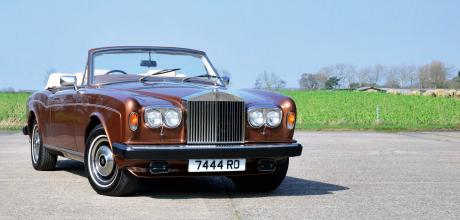1980 Rolls-Royce Corniche Convertible
This elegant Corniche has found a happy home for life, says its owner. Careful investment and attention has turned a good example into a car to be proud of…and it gets enjoyed, too.
WORDS & PHOTOS: NIGEL BOOTHMAN
GORGEOUS CORNICHE BANISH WINTER BLUES
Glorious convertible offers a short-cut to summer
It’s hard to picture sunny days out in glorious convertibles when you’re in the middle of a British winter. Perhaps readers in other parts of the world are slapping on the sunblock and taking the roof down, so we’ll try to get into the same mood. After all, it was only a few short months ago that we had a wonderful day in subtropical East Yorkshire, meeting Blair Jacobs and his Rolls-Royce Corniche.

Styled for 1965, made till 1995 — timeless good looks indeed.
As we pull up outside the farm property where Blair’s business, Pipe Dreams Classic Cars, is based, the Corniche is glinting in the sun like a well-polished bronze sculpture. That paint shade is actually called Nutmeg, a fine metallic that changes in the light, showing hues of rose gold amongst the darker tones. This is a 1980 example, and therefore a Corniche I Series II (see 'The longest-lived model') with a mechanical specification very similar to the last Silver Shadow II saloons, built the same year. Blair has had his car since 2016, during which time it’s enjoyed various bits of attention, some quite involved. It’s still not perfect in Blair’s eyes, but it’s probably reached that state where only the owner can spot anything wrong.
“It's serene, as you’d expect, with the gentle whoosh of the wind and the tyres drowning out any mechanical noise”
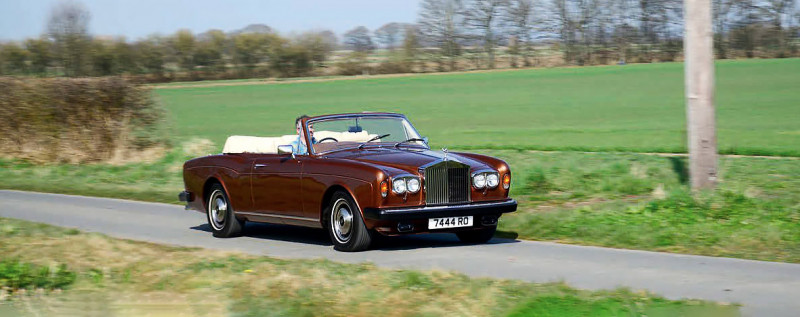
Blair grew up with a father who was both a motoring journalist and a broadcaster; Clive Jacobs was most familiar to millions of listeners through his programme Going Places on BBC Radio 4. Cars of all kinds passed through the family and petrol entered Blair’s blood, if it wasn’t already there by breeding. He too owned many classics over the years as his own career in broadcasting developed, before an important moment in 2016.
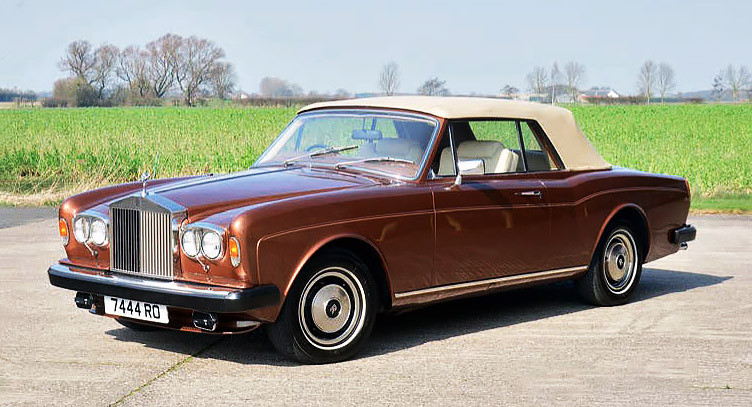
It's still an elegant car with the roof erected, isn't it?
‘We were in New York city, celebrating my daughter’s 16th birthday,’ says Blair. ‘I had a moment to myself and was browsing through Ebay, when I saw this beautiful Corniche for sale in Scotland. I didn’t buy it then and there, but I did contact the owner and establish an offer that worked for us both – if the car was as described when I went to see it. It happens to be my wife’s all-time favourite car, so I had an easy sell!’ Blair arranged to go and view the Corniche as soon as they returned to the UK, heading up to Dundee for the inspection. He found nothing that seemed too alarming and completed the deal, driving off in sunshine for the long trip back to Yorkshire.
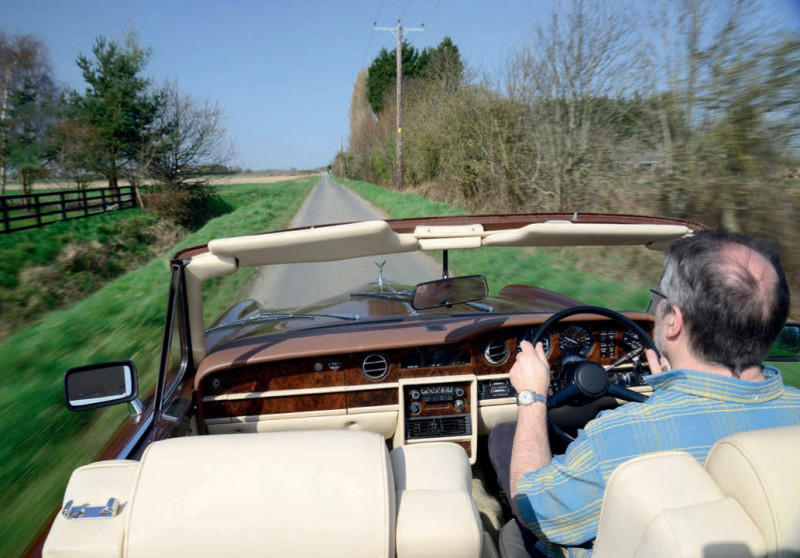
The open road beckons for Blair — and they're often empty in East Yorkshire
‘It started in sun,’ says Blair, ‘but sun became clouds, the clouds became rainy and the rain became torrential. Then the M74 came to an almost total halt for nearly three and a half hours.’
Blair was sitting in a 36 year-old Rolls-Royce convertible with no real knowledge of how it would behave when trapped in a traffic jam, and as wet as could be. Most of us have had similar experiences; muttered prayers or pleas to the motoring gods or the car itself – be nice, keep going, don’t let me down! Blair had clearly taken a shine to the Corniche already, as he admits. ‘I actually said out loud – “get me home and I’ll never sell you”. And it did…it just kept running, smoothly and quietly, all through that journey and we got home without any trouble.’

Perhaps in an effort to reward the car’s good behaviour, Blair set about improving both the mechanical condition (new spheres and an expensive brake rebuild, plus sundry fresh engine gaskets and some service work) and its cosmetic appeal. This later program of works became quite extensive, as Blair describes.
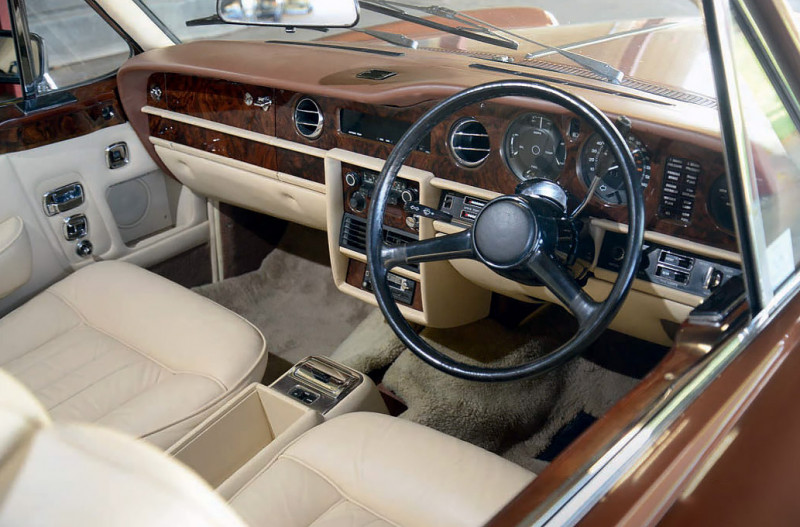
Re-veneered wood and recoloured hide make for a glorious cabin.
‘I stripped out the entire interior, including parts of the dashboard. The leather went away to have the colour stripped off; it needed a few repairs and it also was too yellowy for me. I wanted it to be closer to the colour of the hood. I guess it’s now nearest to Parchment, though it’s not exactly the same. Every piece of veneered wood went away to Chapman and Cliff in Cheshire, and they made an amazing job of it. In the end, the veneers themselves were renewed and re-lacquered, and the result is stunning.’
Blair went around the car dealing with other minor annoyances such as slow electric windows in need of lubrication and temperamental fuses, now replaced with new items. All that’s left is the replacement or repair of the air conditioning servo, but for most of the year, Yorkshire-based drivers of convertible cars can get by without air conditioning.
‘I suspect there’s a little bit of filler in the car, here and there,’ says Blair, but we’re struggling to spot imperfections. ‘There’s some microblistering on part of the bonnet too, so I’d like to get the body thoroughly sorted out one day.’ Remember how we mentioned those faults that only owners can detect?
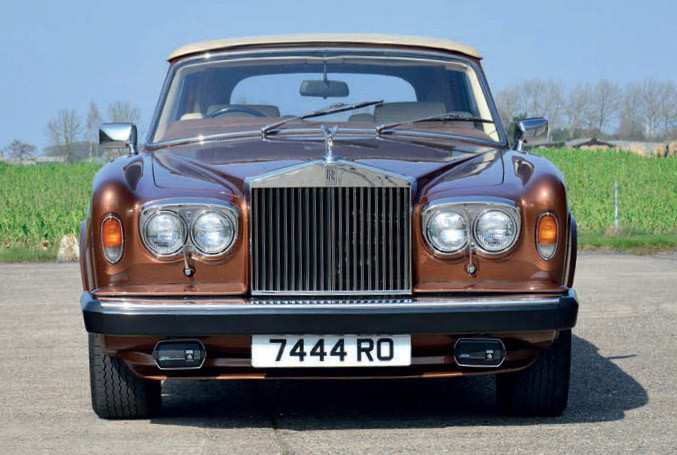
Time to head out for a drive. This part of East Yorkshire is almost fenland, with long straight lanes between table-flat fields and drains. The vanishing point, a mile ahead, would be an American view if we had desert around us rather than greenery and peaceful sheep, but it allows a relaxed approach to motoring: one hand on the wheel, roof down, windows down, elbow on top of the door. It's serene, as you’d expect, with the gentle whoosh of the wind and the tyres drowning out any mechanical noise. We ask Blair for his impressions of the Corniche driving experience, bearing in mind he has recently bought, refurbished and sold a Silver Shadow of a similar vintage that made an interesting comparison.

‘The Corniche floats along and for a 1980 convertible, it’s pretty quiet with the roof up. Not silent like a modern convertible, so it takes you back in time to what they must have been like when new – which would have been much better than most other soft-tops. The difference I noticed between the Corniche and the Silver Shadow was really just in the legroom. The Shadow has more, but I couldn’t tell you why. I still love driving the Corniche though, and you can’t really beat looking down the bonnet past the Spirit of Ecstasy, can you?’
The country roads may be straight but they’re not outstandingly flat, though the Corniche does a fine job of keeping this secret from the occupants. It dismisses small aberrations in the tarmac but over larger dips and rises it can wallow and plunge a little – normal for the SY generation cars and their cosseting suspension, but a mile from the screwed-down feel of modern cars.
But its difference from modern cars is precisely what Blair likes about it. ‘I didn’t buy it for the “look at me” aspect, though if people pay attention to it, that’s fine – I’m always flattered by these unexpected compliments to the car. I wanted a Corniche because it’s classically elegant, and elegance is something that’s gone missing on almost all our modern cars.’
Best enjoyed roof down — and that happens at the touch of a button, as shown below.
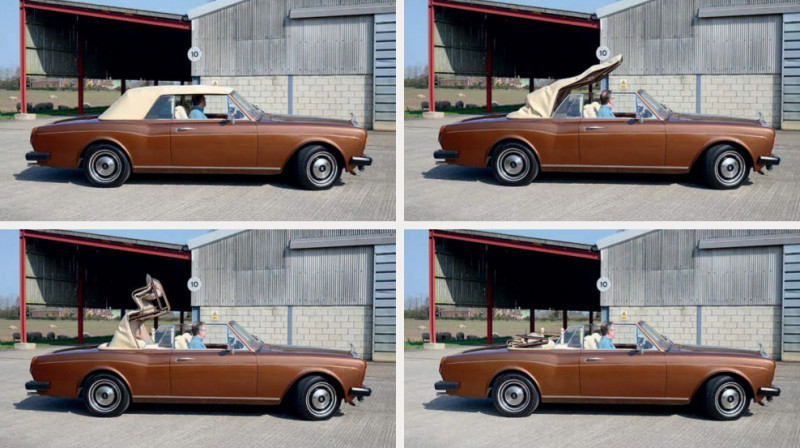
What with the lengthy repairs, the establishment of Blair’s classic car business and the pandemic, the Corniche hasn’t yet been used for any long-distance adventures, though these are on the cards.
‘The dream drive would be a trip to Italy, I guess,’ says Blair. ‘Or we get most of the way there and think “Let’s go to Monaco!” because you would, wouldn’t you? I’m not yet convinced I’d be happy with the reliability for big European trips, so perhaps a run down to see relatives in the south of England might be a good first step, come the summer.’
He admits fuel costs have been off-putting, something many readers will identify with. But travelling first class has never been cheap. Who knows how long we’ll be able to enjoy glorious cars like this on the roads they were built for, and in the case of the Corniche, named after? But Blair needs no encouragement to get the best from this beautiful machine – it even goes to the supermarket if the weather’s nice, though Blair is careful to park it well away from the crowded end of the car park. And British weather being what it is, that might be a day in July or a day in January…well, maybe March. But the point is that a car like this Rolls-Royce doesn’t really have to wait for a fine summer day, it is a fine summer day in four-wheeled form. Need cheering up? Take a ride in a Corniche.
“...it’s classically elegant, and elegance is something that’s gone missing on almost all our modern cars.”
TECHNICAL DATA 1980 Rolls-Royce Corniche Convertible
- LENGTH: 5190mm / 17ft
- WIDTH: 1830mm / 6ft
- WEIGHT: 2280kg / 5027lb
- ENGINE: 6750cc OHV V8
- MAX POWER: 220bhp (est)
- MAX TORQUE: 300lb ft (est)
- 0-60MPH: 9.6s
- TOP SPEED: 120mph
- COST NEW: £66,366 (1980)
LEARNING ON THE JOB
Since we photographed the car for this article, Pipe Dreams Classic Cars has taken on an apprentice. Ollie is 20 years old and for one week in every five, attends classes with the Heritage Skills Academy in Bicester, Oxfordshire. This was founded in 2015 to train the next generation of heritage engineers and to promote opportunities within the heritage industry. If you worry about the depletion of traditional skills from coachbuilding to trim to mechanical knowledge, have a look at www. heritageskillsacademy.co.uk to see what’s available to keen youngsters. ‘The idea is that Ollie will finish this course after three and half years knowing more than I’ll ever learn,’ says Blair, ‘and he’ll be qualified too. We’re already offering more mechanical restoration services to our customers, including a full rebuild of a Land Rover Defender. When that’s done, we’ll be moving on to a 1988 Mercedes-Benz SL R107, which we’ll build up from a bare shell.’
THE LONGEST-LIVED MODEL
If success is measured in longevity, the Corniche in its many forms was the most successful car Rolls-Royce ever made. From the first Mulliner Park Ward coupé in 1966 to the last Corniche S in 1995, it lasted 28 years – longer than the 40/50hp ‘Silver Ghost’ (20 years) or the Phantom VI (22 years). The combination of luxury, performance, image, handtooled quality and a full four-seat configuration was still compelling 15 years after the Silver Shadow saloon was replaced, despite the tremendous expense. When Blair’s car was new in 1980, the first owner could have had a Ferrari 308 GTB, a Mercedes-Benz 450 SL R107, a Porsche 928 and three Minis for the same sum.

But there was never much competition. Many other prestigious marques offered convertibles, though very few outside America offered comfortable seating for four or five people. Even there, a fear over imminent law changes against full convertibles thinned the pack a great deal during the 1970s. Rolls-Royce kept production with Mulliner Park Ward in London until all but the last examples in the mid-1990s, and by that time the model had been through many iterations. When you examine them, it’s remarkable how little was changed to keep this car attractive to buyers. The first convertible, completed in early in 1967, set the pattern that was to follow: electrically operated, lined convertible roof; mechanical parts that duplicated the contemporary Silver Shadow; trim levels perhaps even higher than in the saloon thanks to MPW’s selection of the choicest hides and veneers. The Corniche name arrived in 1971 as detail changes continued to evolve alongside the saloon, though when the Silver Shadow II came along in 1977, the Corniche convertible kept its name, and is now usually described as being Series I (up to ’77) or Series II (’77 onwards) specification. Confusingly, a Corniche II then arrived for 1986 with colour-keyed bumpers and mirrors and a third brake light on the boot lid. The Corniche III followed with only detail changes to dash and elsewhere, then the Corniche IV finished things off (almost) from 1992 with ABS, a four-speed gearbox and two airbags.
Almost, because a Corniche S tied off the run in 1995 with a turbocharged engine from the Bentley Turbo R, producing a limited run of American-market cars with a startling turn of pace. This was probably the first step-change in the way a Corniche felt to drive, showing how right it was from the very beginning.


